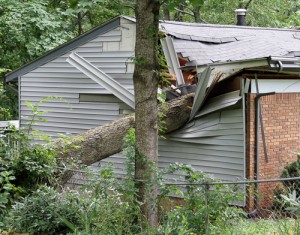Feng shui is a Chinese philosophical system that supposedly orients buildings and their contents in an auspicious manner. Last month in Patel v. American Economy Ins. Co., — F.Supp.2d —, 2014 WL 1862211 (N.D. Cal., May 8, 2014), however, a California court rejected the notion that it was compensable under a first-party property insurance policy as either a legitimate expense to repair direct physical loss or damage or a necessary extra expense to avoid additional business income loss.
On October 14, 2009, a fire filled the dental offices of Dr. Namrata Patel with smoke. Dental and electronic equipment was damaged, and she incurred costs for cleaning and repair, inventory replacement, and lost business income during a one-month closure after the blaze. Dr. Patel was insured by American Economic Insurance Company, and she made claim for her loss. The insurer paid portions of her claim, but it denied liability for other components, and the dentist subsequently brought suit in federal court in California, alleging breach of contract and bad faith.
 One of the two principal bones of contention was a claim for over $50,000 for a feng shui consultant. Dr. Patel utilized feng shui when she initially opened her dental practice. Prior to reopening after the fire, she did so once again, and the claim included a “Five Elements Feng Shui Invoice” in the amount of $50,275. According to her affidavits, the feng shui consultant was retained “to come in and change crystals and perform additional cures to help to restore the location to its original condition,” to “restore energy balance,” and to determine “placement of furniture and dealing with forces of Qi.” The policy insured against “direct physical loss of or damage to Covered Property,” an0d Dr. Patel contended that the consultant’s services fit within that definition because she had used him when she had originally set the office up. She also sought to invoke coverage under the contract of insurance’s extra expense provision. Read more ›
One of the two principal bones of contention was a claim for over $50,000 for a feng shui consultant. Dr. Patel utilized feng shui when she initially opened her dental practice. Prior to reopening after the fire, she did so once again, and the claim included a “Five Elements Feng Shui Invoice” in the amount of $50,275. According to her affidavits, the feng shui consultant was retained “to come in and change crystals and perform additional cures to help to restore the location to its original condition,” to “restore energy balance,” and to determine “placement of furniture and dealing with forces of Qi.” The policy insured against “direct physical loss of or damage to Covered Property,” an0d Dr. Patel contended that the consultant’s services fit within that definition because she had used him when she had originally set the office up. She also sought to invoke coverage under the contract of insurance’s extra expense provision. Read more ›

 On February 16, 2006, State Farm submitted a quarterly bill for the two policies, payable on or before April 6
On February 16, 2006, State Farm submitted a quarterly bill for the two policies, payable on or before April 6 Richard Palkimas was insured under a homeowner’s policy issued by State Farm Fire & Casualty Company, and he sustained two losses. The first occurred in September 2006, “when workers negligently used a toilet that had been blocked off resulting in a buildup of sewage, and the breaking and rupturing of a sanitary pipe, as well as the spreading of sewage and fecal matter throughout the home.” Then in January of the following year, the policyholder discovered that “freezing temperatures caused substantial damage to [his] home, including fracturing of the plaster walls and building structure.”
Richard Palkimas was insured under a homeowner’s policy issued by State Farm Fire & Casualty Company, and he sustained two losses. The first occurred in September 2006, “when workers negligently used a toilet that had been blocked off resulting in a buildup of sewage, and the breaking and rupturing of a sanitary pipe, as well as the spreading of sewage and fecal matter throughout the home.” Then in January of the following year, the policyholder discovered that “freezing temperatures caused substantial damage to [his] home, including fracturing of the plaster walls and building structure.” The policyholder owned an apartment complex that was insured by Dryden Mutual. The structure was damaged when waste water inundated the first floor, entering the units through toilets, bathtubs, and drains. The insurer denied liability, contending that coverage was barred by two “Water Damage” exclusions. The first recited that loss caused by “water which backs up through sewers and drains” was excluded, while the second barred coverage for “loss caused by repeated or continuous discharge, or leakage of liquids or steam from within a plumbing … system.” The second of these exclusions, however, went on to state that Dryden Mutual would pay for “loss caused by the accidental leakage, overflow or discharge of liquids or steam from a plumbing … system.”
The policyholder owned an apartment complex that was insured by Dryden Mutual. The structure was damaged when waste water inundated the first floor, entering the units through toilets, bathtubs, and drains. The insurer denied liability, contending that coverage was barred by two “Water Damage” exclusions. The first recited that loss caused by “water which backs up through sewers and drains” was excluded, while the second barred coverage for “loss caused by repeated or continuous discharge, or leakage of liquids or steam from within a plumbing … system.” The second of these exclusions, however, went on to state that Dryden Mutual would pay for “loss caused by the accidental leakage, overflow or discharge of liquids or steam from a plumbing … system.” In Mirarchi, a fire damaged the insured’s property. The insurer paid the entire undisputed amount, and the parties proceed to appraisal on the remainder of the claim. An umpire entered an award close to the amount sought by the policyholder, and the carrier paid. Thereafter, however, the insured filed an action against the insurance company in federal court, asserting that the insurer had delayed payment in bad faith, and he requested discovery of the company’s reserve information. Seneca Specialty refused to provide the requested information, and the district court held that it was not obligated to so so. The trial court subsequently dismissed the bad faith claims in their entirety, noting that the insurer had paid the undisputed amount despite the lack of any contractual or legal obligation to do so and further that the insurer, in valuing the claim lower than the appraisal award, had relied on reasonable expert opinions.
In Mirarchi, a fire damaged the insured’s property. The insurer paid the entire undisputed amount, and the parties proceed to appraisal on the remainder of the claim. An umpire entered an award close to the amount sought by the policyholder, and the carrier paid. Thereafter, however, the insured filed an action against the insurance company in federal court, asserting that the insurer had delayed payment in bad faith, and he requested discovery of the company’s reserve information. Seneca Specialty refused to provide the requested information, and the district court held that it was not obligated to so so. The trial court subsequently dismissed the bad faith claims in their entirety, noting that the insurer had paid the undisputed amount despite the lack of any contractual or legal obligation to do so and further that the insurer, in valuing the claim lower than the appraisal award, had relied on reasonable expert opinions.  TRIA is activated once an event has been certified as an “act of terrorism” by the Secretaries of the Treasury and the Departments of State and Homeland Security. There is presently a $27.5 billion annual aggregate retention level, meaning that industry-wide commercial and worker’s compensation claims from a terrorist attack must exceed $27.5 billion before TRIA kicks in. The statute also has an 85/15 co-pay; above $27.5 billion, the federal government pays 85% of the loss and the insurance industry pays the remaining 15% up to a cap of $100 billion. Finally, each individual insurance company has a deductible that it must fund equal to 20% of its total property and casualty insurance premiums.
TRIA is activated once an event has been certified as an “act of terrorism” by the Secretaries of the Treasury and the Departments of State and Homeland Security. There is presently a $27.5 billion annual aggregate retention level, meaning that industry-wide commercial and worker’s compensation claims from a terrorist attack must exceed $27.5 billion before TRIA kicks in. The statute also has an 85/15 co-pay; above $27.5 billion, the federal government pays 85% of the loss and the insurance industry pays the remaining 15% up to a cap of $100 billion. Finally, each individual insurance company has a deductible that it must fund equal to 20% of its total property and casualty insurance premiums.  In
In  On appeal, the District Court of Appeal completely rejected the lower court’s use of an order compelling an appraisal as a vehicle to make coverage determinations, finding that it was procedurally improper and violated due process. The court was clear that, under Florida law, such coverage determinations are only appropriate when based on competent evidence reviewed through either summary adjudication or at trial. Additionally, and in light of the insurer’s complete denial of the damage at issue, the District Court of Appeal held that a judicial determination on all coverage issues, including causation, must first be made by the court. In reaching its ruling, the court cited a Florida Supreme Court decision, Johnson v. National Mut. Ins. Co., 828 So.2d 1021, 1022 (Fla. 2002), which held that “causation is a coverage question for the court when an insurer wholly denies that there is a covered loss and an amount-of-loss question for the appraisal panel when an insurer admits that there is covered loss, the amount of which is disputed.”
On appeal, the District Court of Appeal completely rejected the lower court’s use of an order compelling an appraisal as a vehicle to make coverage determinations, finding that it was procedurally improper and violated due process. The court was clear that, under Florida law, such coverage determinations are only appropriate when based on competent evidence reviewed through either summary adjudication or at trial. Additionally, and in light of the insurer’s complete denial of the damage at issue, the District Court of Appeal held that a judicial determination on all coverage issues, including causation, must first be made by the court. In reaching its ruling, the court cited a Florida Supreme Court decision, Johnson v. National Mut. Ins. Co., 828 So.2d 1021, 1022 (Fla. 2002), which held that “causation is a coverage question for the court when an insurer wholly denies that there is a covered loss and an amount-of-loss question for the appraisal panel when an insurer admits that there is covered loss, the amount of which is disputed.” Lyons notified Lexington of the water inflow in July 2010, after it had already spent $2.5 million on the problem. The insured sought coverage under six Lexington policies of “all risk” property insurance issued between March 2004 and April 2010. Suit was filed in the Spring of 2011 after Lexington refused to commit to reimbursement. The sworn statement in proof of loss that Lyons submitted in December of 2010 sought $7.5 million, and the policyholder was estimating that the total cost of investigating and fixing the intrusion would top $11 million as of last year.
Lyons notified Lexington of the water inflow in July 2010, after it had already spent $2.5 million on the problem. The insured sought coverage under six Lexington policies of “all risk” property insurance issued between March 2004 and April 2010. Suit was filed in the Spring of 2011 after Lexington refused to commit to reimbursement. The sworn statement in proof of loss that Lyons submitted in December of 2010 sought $7.5 million, and the policyholder was estimating that the total cost of investigating and fixing the intrusion would top $11 million as of last year.
